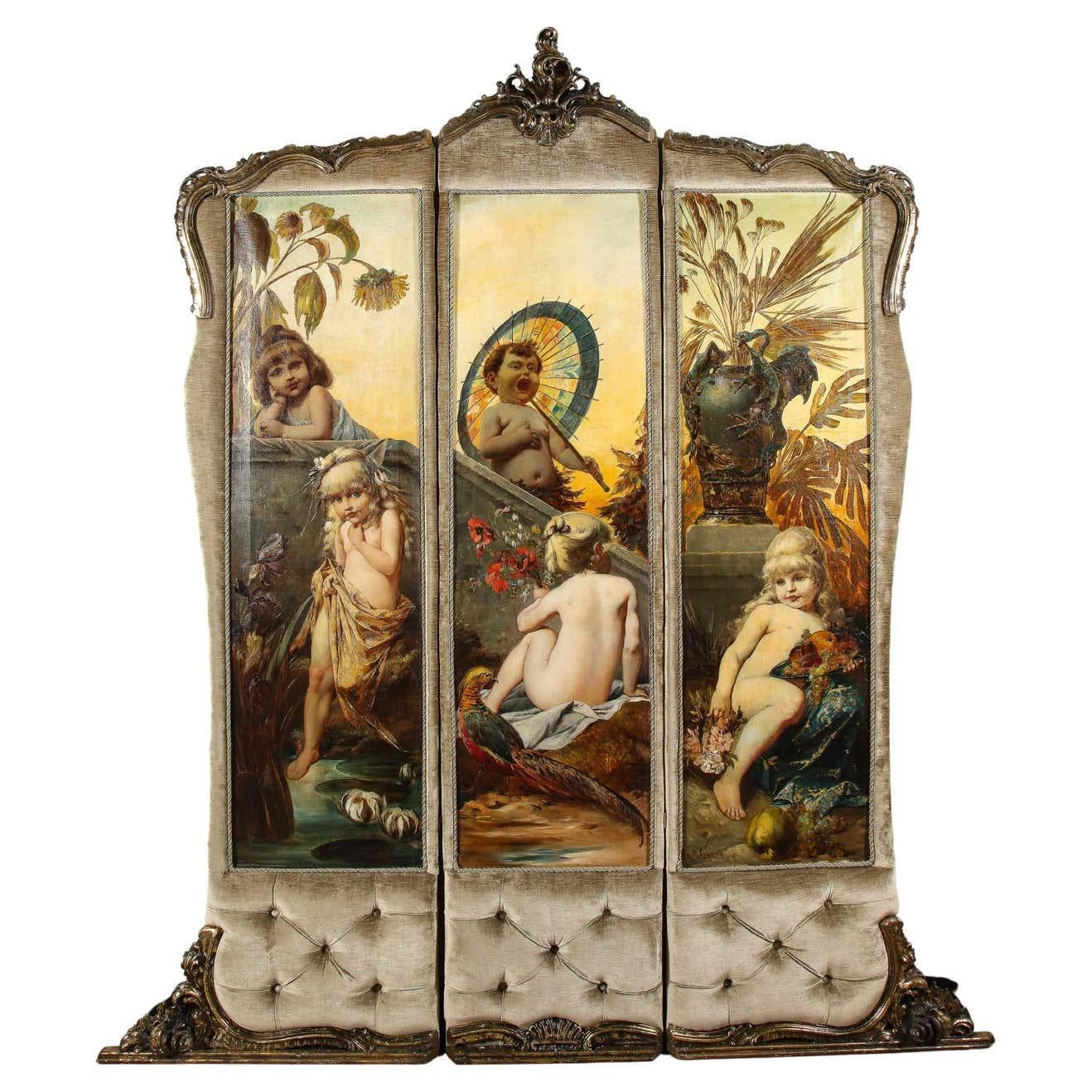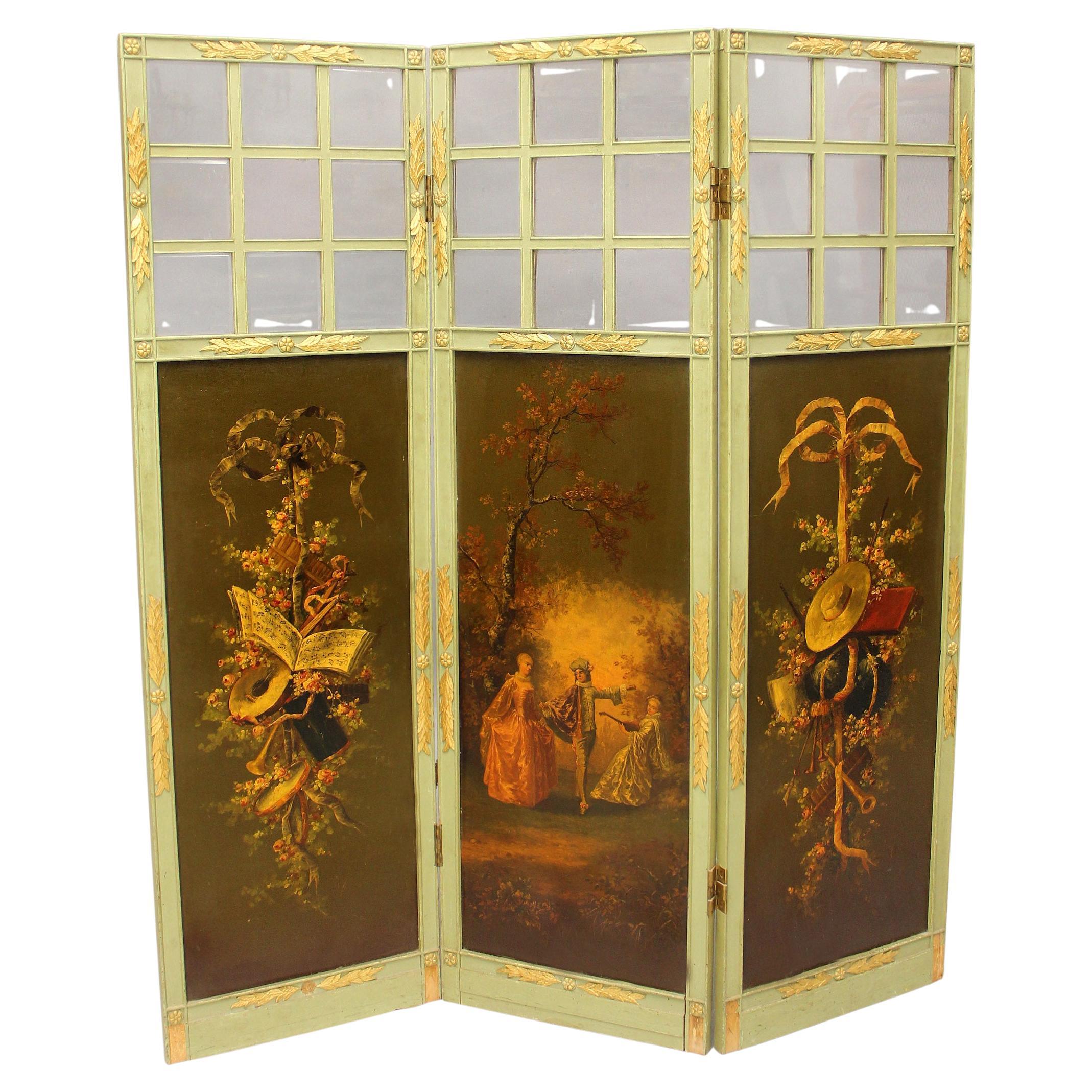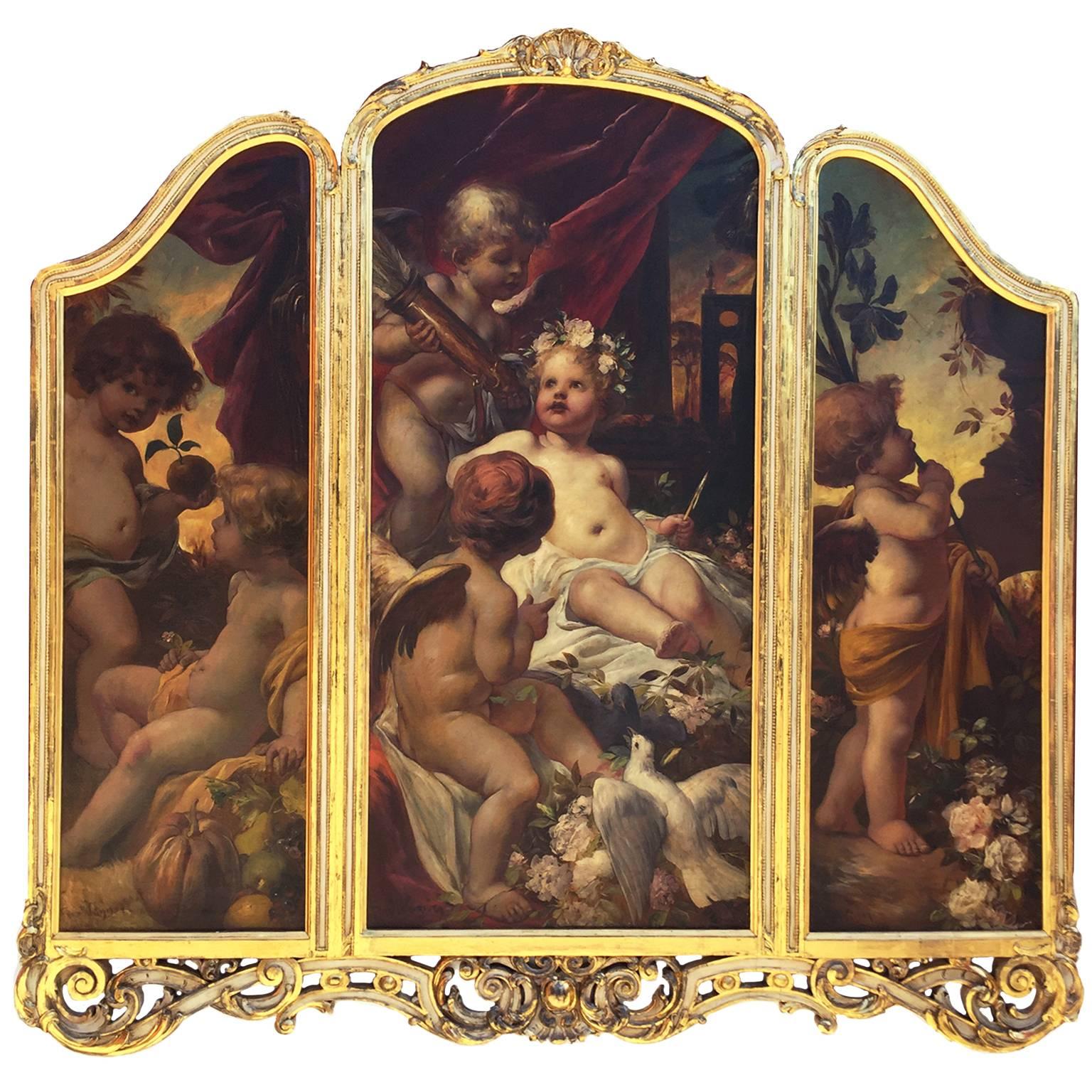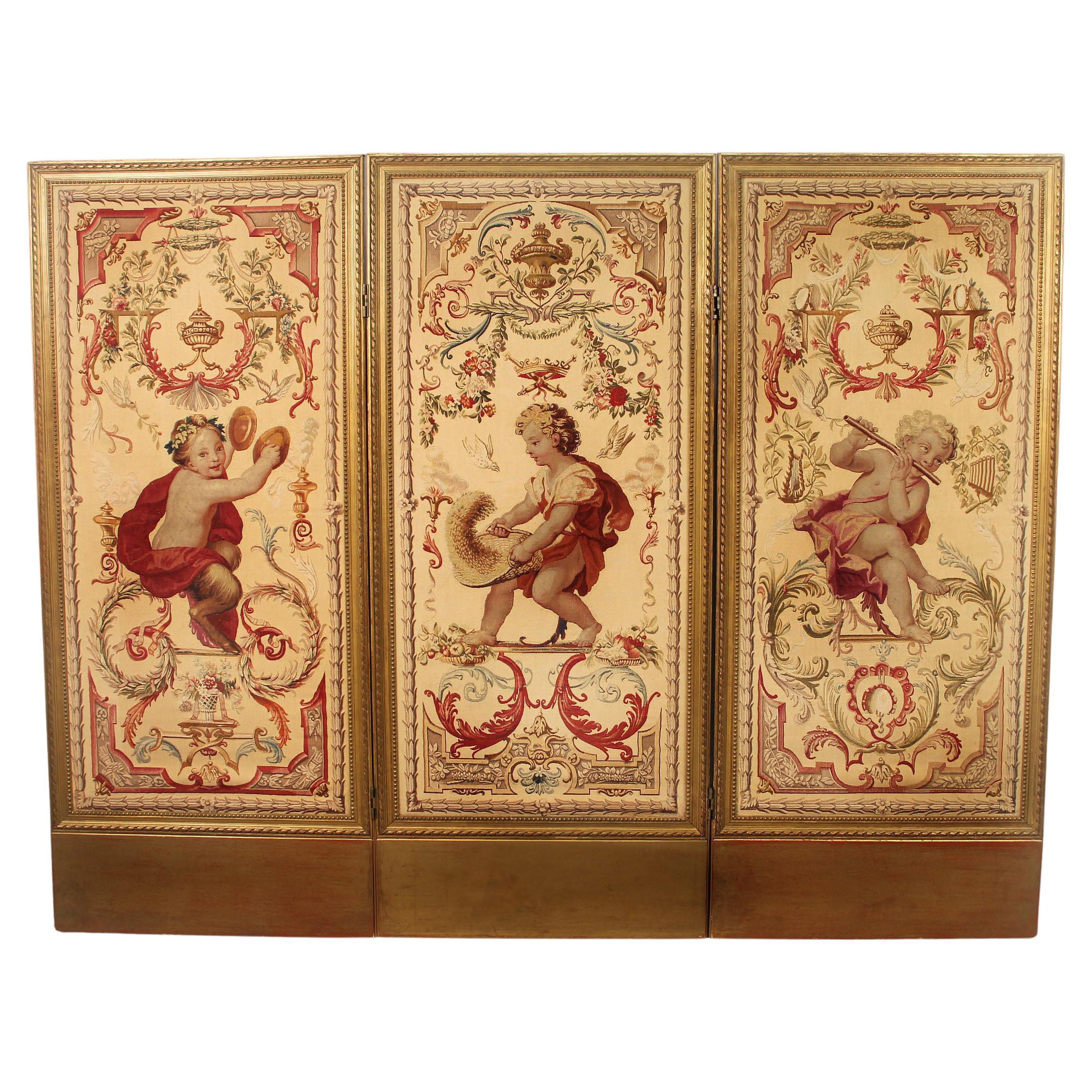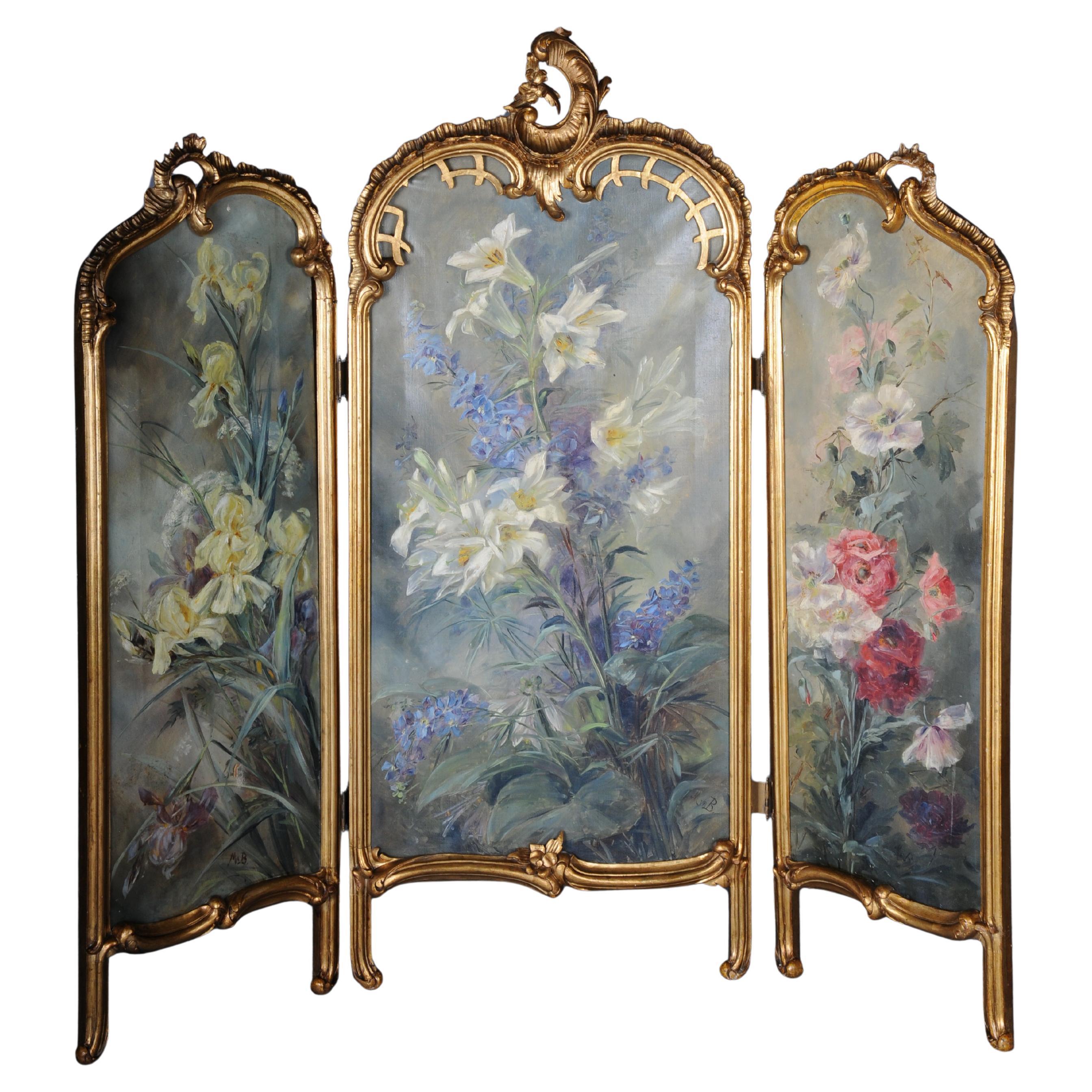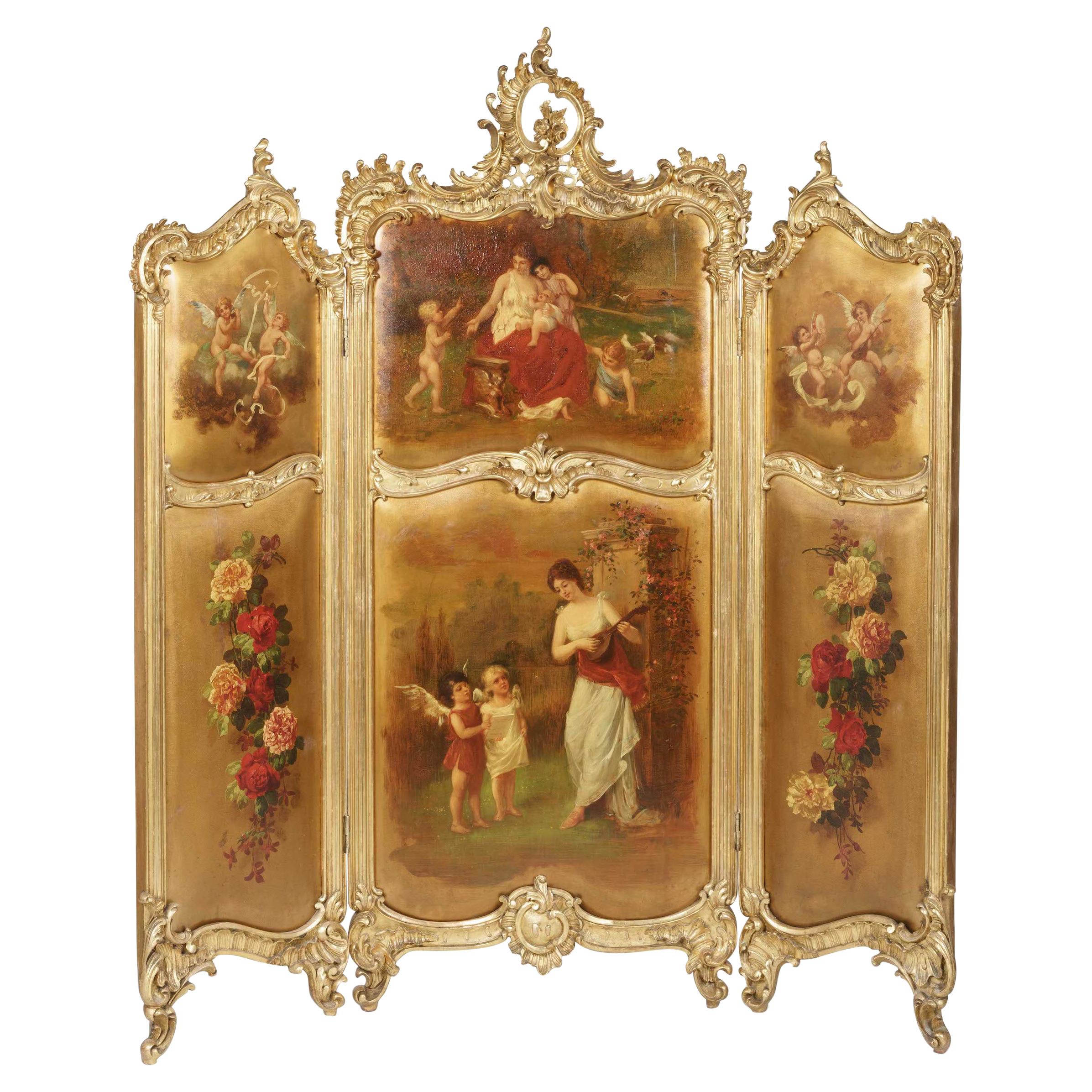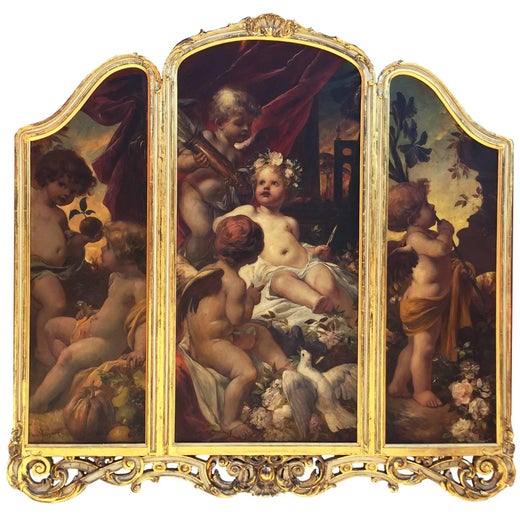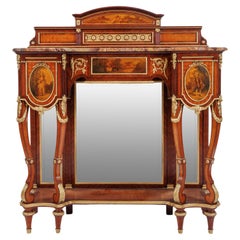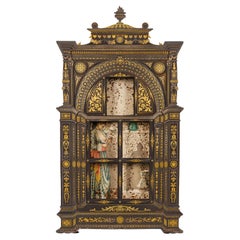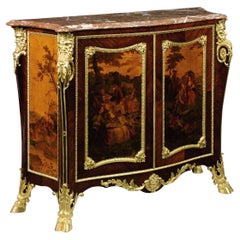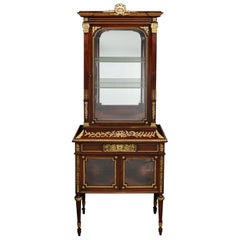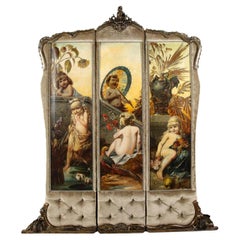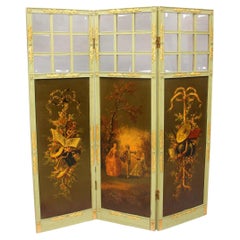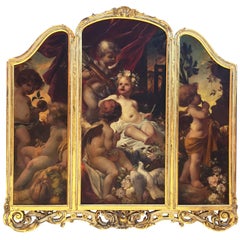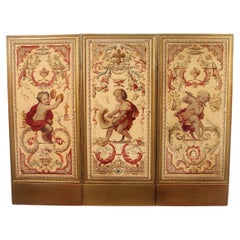Palatial and Opulent Belle Epoque Giltwood & Oil on Canvas Three-Panel Screen
About the Item
- Creator:Ferdinand Wagner II 1 (Painter)
- Dimensions:Height: 101 in (256.54 cm)Width: 85 in (215.9 cm)Depth: 5 in (12.7 cm)
- Style:Belle Époque (Of the Period)
- Materials and Techniques:
- Place of Origin:
- Period:
- Date of Manufacture:circa 1880
- Condition:Wear consistent with age and use.
- Seller Location:Queens, NY
- Reference Number:1stDibs: LU1798227737212
Ferdinand Wagner II 1
Ferdinand Wagner II was the son of Passau Ferdinand Wagner Senior, a teacher at a vocational art school who began training him professionally at a young age. After traveling to Italy in 1867–68, he continued with his art studies at The Munich Academy of Arts led by Peter Von Cornelius and Julius Schnorr Von Carolsfeld. Wagner II was influenced by the Munich School of master painters and by his art teacher, Karl von Piloty, who had been teaching at the Munich Art Academy since 1856. Piloty’s approach to historical paintings was influenced by the French art academic Paul Delaroche and by the fine artworks by Rubens and the Venetians. After his return to Germany, he was commissioned to decorate the former the Tenormayer Wine Tavern in Munich, subsequently, he received numerous other commissions as a decorator. Wagner II’s wall paintings and ceiling frescos attracted the attention of the Munich City Hall and he was commissioned to decorate the cellar and at the German Theatre. He also decorated the dining room at The Drachenburg in the Königswinter on the Rhine, the Café of Roth and Luitpold in Munich and The Tivoli Restaurant in London. Between 1890–91, he commissioned numerous artworks for the Prince Bismarck Steamboat. In Passau, he created works at the town's City Hall. Between 1892 and 1916, he worked continuously decorating the Castle Ratibor by Roth where in 1894, he painted its main artwork The Triumph of Aphrodite. Amongst other works, in 1891 he decorated the facade at The Schwyz City Hall, in 1895 the Grand Hall ceiling fresco at the Castle Bueckeburg, in 1897 the decoration of the large dining hall at the Famous Munich Hofbräuhaus. In 1899, he was commissioned to decorate the tower hall of the newly built Hamburg City Hall. In Passau, Wagner II was awarded numerous honors where, in 1887, he was named an Honorary Citizen, Ferdinand-Wagner-Straße Street was named after him and the Ferdinand Wagner Hall at the Town's City Hall was named after him as well.
- ShippingRetrieving quote...Shipping from: Queens, NY
- Return Policy
More From This Seller
View AllAntique 19th Century French Napoleon III Console Tables
Bronze, Ormolu
Antique 19th Century Spanish Islamic Picture Frames
Steel, Iron
Antique 19th Century French Napoleon III Commodes and Chests of Drawers
Marble, Ormolu
Antique 19th Century French Napoleon III Vitrines
Bronze, Ormolu
Antique 19th Century French Napoleon III Vases
Bronze
Antique 18th Century French Louis XV Cabinets
Ormolu
You May Also Like
19th Century Romantic Figurative Paintings
Oil
Early 20th Century French Belle Époque Screens and Room Dividers
Fabric, Wood, Giltwood
Antique Late 19th Century German Rococo Revival Paintings
Canvas, Wood
Antique Late 19th Century French Belle Époque Screens and Room Dividers
Tapestry, Wood, Giltwood
Antique 19th Century French Belle Époque Screens and Room Dividers
Canvas, Wood
Antique 19th Century French Louis XV Screens and Room Dividers
Giltwood, Paint
